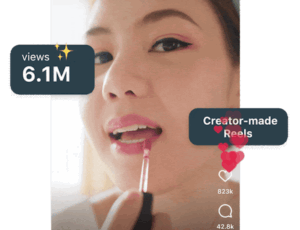 “Data Driven Thinking” is written by members of the media community and contains fresh ideas on the digital revolution in media.
“Data Driven Thinking” is written by members of the media community and contains fresh ideas on the digital revolution in media.
Today’s column is written by Adam Heimlich, Client Partner at Razorfish.
It’s surprising that we digital marketers aren’t closer to consensus about how our medium exerts influence, especially considering what we have to gain from acceptance of the proposition that digital media is influential. We all agree that it is, yet we argue about how. The lack of a working model is especially surprising given the weakness of the default substitute – that what we do represents the next level of branding.
In fact, digital is not a continuation of the old method of media influence.
And it shouldn’t be controversial to claim that this line of argument has failed. Digital marketers have been voicing it consistently for more than a decade. Yet executives are as skeptical of our communications strategies, relative to TV-focused plans, as they were in 2003. People who know branding can plainly see that search, display and social ain’t it. Fortune 500 marketing execs believe these channels are important only because attention is on digital screens, and attention is potential energy. As for how to harness it – maybe the quants will find the answer!
As any digital pioneer can tell you, “branding effect” was the first needle for which analysts were sent hunting in digital’s data haystacks. If it were there, compelling evidence would have been produced by now. It’s time for digital marketers to admit that top advertisers’ focus on traditional media for branding is a data-driven decision.
We’ll serve our interests better by asserting that new media influences people in a new way. Advertising history provides precedents; radio ads differed from newspaper ads, and advertisers who’d built their brands on the page had to learn a new language before they could thrive in the television era (One of the least-noticed themes of Mad Men is the generation gap between the advertising approach of print experts like Don Draper and his staff of electrified young boomers).
Branding works through skillful manipulation of human biases. When we think quickly, we think what we’re primed to think. If branding is well-matched to business strategy, an audience can be primed to associate a company with a product category that’s both profitable and available. Resistance is futile. This is as true for Lululemon as it was for Cadillac. In more than 10 years of digital, such an exercise of influential mojo has never been performed through search, display and social (Digital as the caboose of a multi-channel branding effort doesn’t count).
Of course there are many successful online brands, and some of them made it without a single branding ad. Their methods are the answer to the riddle “How does digital influence?”
A survey of online commentary on this topic turned up approximately one billion confounding checklists and exactly two articles that espouse coherent theories, both from paragons of traditional media business: AdAge’s “Relationship Era” and McKinsey’s “Loyalty Loop” (Authors are Bob Garfield and Doug Levy at AdAge, Mar. 2013; David Edelman from McKinsey writing in Harvard Business Review, Dec. 2010).
Two Branding Theories
AdExchanger Daily
Get our editors’ roundup delivered to your inbox every weekday.
Daily Roundup
The “Relationship Era” contains the more radical concept. Openly hostile to branding orthodoxy, it commands us to “say goodbye to positioning” and “jettison some old habits, such as trying to manipulate prospects.” Digital brings so much transparency, goes the central claim, that brands have more to gain by being honest and trustworthy than by conveying their unique selling propositions. Likening the messaging environment to an ecosystem, the piece urges a “sustainable” approach, supported by a population in emotional symbiosis with a company they love.
To follow this theory is to limit corporate communications to endearing messages. The only thing worth talking about is why you should love us. And we have to find useful and entertaining ways to get that across, so you also love receiving the message.
And, of course, the firm must actually be lovable. It goes without saying that this requires a level of sales, service and operational excellence that’s difficult to achieve and usually beyond the scope of marketing. What Garfield and Levy’s “Relationship Era” demands instead is an “authentic sense of purpose” that is clear to – and appreciated by – an audience that shares the goal. Mini case studies on Patagonia and Krispy Kreme reveal “Relationship Era” theorists to be believers in digital word-of-mouth as a potent upgrade of branding. The differences are that positioning is now around values, and that it must ring true.
McKinsey’s Edelman is more of an incrementalist. Citing a treasure trove of proprietary data on how 20,000 consumers on three continents made purchase decisions in five categories, he wants to bury not manipulation necessarily but the funnel. “Branding In the Digital Age,” as the piece is headlined (its subtitle is less comforting: “You’re Spending Your Money In All the Wrong Places”), requires a shift in emphasis rather than a total reset. The crux is that people don’t proceed in order from awareness to conversion. Brands are defined along the journey.
In the digital age, Edelman says, there’s a long, rich period of consideration and engagement that belies the metaphoric funnel. It doesn’t make sense to spend most marketing dollars on TV and point of purchase, which come before and after this meandering stage. Plus, customers tend to loop back to engagement after purchase, writing reviews and publishing feedback that in turn becomes fodder for other considerers. This is the Loyalty Loop. Its existence implies a need for not only a spend shift but “New Roles for Marketing.”
In acknowledgement of the operational necessities that Garfield and Levy omit, Edelman calls for marketing participation in the creation and function of excellent “owned media” (a.k.a. the company website) as well as “a plan that will make a customer’s experience coherent,” thereby stretching marketing’s accountability across sales and service, both online and off. For Edelman, experiences with a company exert more influence than traditional branding. The marketer’s job is to find and repair every pothole in the path to loyalty. He recommends starting with a pilot program.
Can Marketers Realistically Market These Concepts?
The two theories are not contradictory any more than being loved and providing seamless service are mutually exclusive. But they don’t add up to a methodology as simple and scalable as branding. And both theories assert that advertising can no longer do what advertising has always done. A CMO presented with these two options will question if being lovable or delivering seamless experiences – let alone both – can ever be mastered as he mastered branding (which, again, still works on TV).
Garfield and Levy’s elucidation of the influential superiority of values-based messaging in the “Relationship Era” is tough to refute. Much as the first generation raised on TV was the first to claim possession of a “social conscience,” digital technology brings acute awareness of how actions connect to consequences. If emotion remains the key to influence, values are where marketers should focus.
If information has made decision-making more rational, then emotional appeals won’t hold sway, and service communications should be prioritized. McKinsey lists the technical obstacles to smooth dealings across channels, leaving out the fact that these obstacles are much higher and thornier than most marketers can handle. The route to experience prowess runs through Big Data, and most marketing organizations (and agencies) suck at small data. For a future where service trumps ads, marketers should first build common cause with IT and sales.
Before choosing a side, one might ask, “What about search, display and social, not to mention mobile and digital video and interactive out-of-home?” After all, these define the arena where new media is funded and assessed – not marcomm or operations. It’s notable that the most compelling narratives about the future of digital influence were developed without regard for its ad formats. While digital ad buyers aspire to branding, influence experts say we should buy fewer ads. They aren’t seeing certain kinds of digital messaging routinely outperforming others, or campaigns that have proven to support service experiences and/or word-of-mouth efforts.
An even bigger omission from both theories, one could argue, is optimization. Do marketers have to decide in advance, for all brands, if values or experiences are more influential when we can design controlled experiments and see results every day?
If it is, maybe there will never be a model for how we influence. That’s yet another reason to swear off the B word.
Follow Razorfish (@Razorfish) and AdExchanger (@adexchanger) on Twitter.












